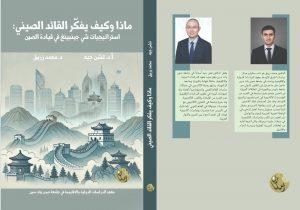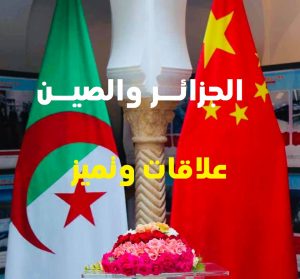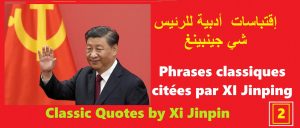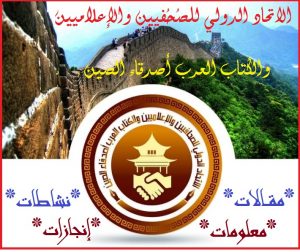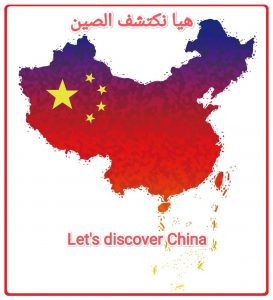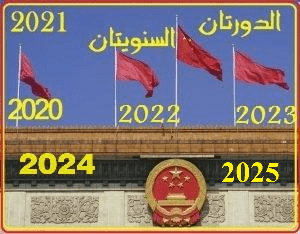القيادة الصينية في زمن التحول – قراءة في نموذج الحوكمة التكاملية لشي جينبينغ
منذ شهرين في 24/أكتوبر/2025
شبكة طريق الحرير الصيني الإخبارية/
القيادة الصينية في زمن التحول – قراءة في نموذج الحوكمة التكاملية لشي جينبينغ
د. عائده المصري، باحثة وكاتبة إعلامية متخصصة في الحوكمة العالمية والاقتصاد السياسي، بخبرة في إدارة النزاعات وتعزيز مرونة سلاسل التوريد. عضو الاتحاد الدولي للصحفيين والإعلاميين اصدقاء وحلفاء الصين، فرع الصين.
في عالمٍ تتشابك فيه أزمات الطاقة واضطرابات سلاسل التوريد وموجات الذكاء الصناعي مع تنافس القوى الكبرى على النفوذ، برزت الصين كحالة دراسية متفرّدة في إدارة التحول. ليست نموذجًا يُستنسخ، بل منظومة حوكمة تجمع بين التوجيه الاستراتيجي والقدرة التنفيذية.
في هذا السياق، يقدّم كتاب «ماذا وكيف يفكر القائد الصيني» أكثر من عرضٍ سياسي؛ إنه خريطة فكرية توضّح كيف تُدار الدولة الصينية عبر أربع ركائز مترابطة تشكّل ما يمكن وصفه بـ نموذج الحوكمة التكاملية في فكر الرئيس شي جينبينغ:
التحديث الاقتصادي: تحويل النمو من الكمّ إلى الكيف عبر الابتكار الصناعي، التكنولوجيا الخضراء، وتوطين سلاسل التوريد الحيوية لتقليل المخاطر. لا يقتصر الهدف على تعظيم الإنتاج، بل على إدارة المخاطر الاقتصادية وتحقيق التوازن بين الانفتاح والاستقلال.
الحوكمة الشعب-محور: بناء الشرعية على جودة الخدمات وعدالتها لا على الشعارات. فالمواطِن شريك في تقييم الأداء، والدولة مطالَبة بإقناع المجتمع من خلال النتائج. بذلك يصبح مبدأ «الشعب أولًا» أداة قياس حوكمي يمكن توظيفها في أي نظام يسعى إلى ربط الكفاءة بالمساءلة.
الانضباط والإصلاح الإداري: ضبط الأداء ومنع تآكل النزاهة عبر منظومة رقابة مؤسسية. حملات مكافحة الفساد ليست عقوبات فحسب، بل تصميمٌ إداري لضمان التناغم بين المستويات الحكومية وتخفيض تكاليف التنسيق. من منظور إدارة النزاعات، يُعدّ هذا الانضباط آليةً لاحتواء تضارب المصالح وصيانة الثقة المؤسسية.
الدبلوماسية التنموية: الامتداد الخارجي للفكر الإداري ذاته. فمبادرة الحزام والطريق لا تُقدَّم كمشروعٍ استثماري فقط، بل كمنظومة حوكمة خارجية تنقل منطق التكامل الداخلي إلى العلاقات الدولية، وتبني الثقة عبر الشراكة وتحويل التنمية إلى لغة نفوذٍ ناعمة.
يُعرّف الكتاب هذا التوجه منطلقًا من فكرةٍ محورية تقول إن «الشعب هو حجر الأساس في بناء الدولة، والتنمية لا تكتمل ما لم تُترجم إلى تحسينٍ ملموسٍ في حياة الناس». بهذا المنظور، تتحول القيادة من سلطةٍ فوقية إلى إدارةٍ للأثر العام، ويُقاس نجاحها بقدرتها على حلّ المشكلات اليومية لا بعدد الخطط والقرارات. هذا التصور يلتقي مع منطق الشرعية عبر الأداء في أدبيات الإدارة العامة الحديثة، حيث تتحوّل الكفاءة إلى مصدرٍ للثقة، والثقة إلى رأس مالٍ مؤسسي يضمن الاستقرار.
وبجمع هذه المحاور الأربع، يتضح أن فكر شي جينبينغ يقدّم نموذجًا هجينيًا للحوكمة يدمج بين الاستقرار السياسي والمرونة الإدارية، ويجعل من الأداء معيارًا للقيادة ومن الانضباط ضمانًا للاستدامة.
هذا النموذج، رغم خصوصيته الثقافية، يقدّم مادةً غنية لدراسة كيف يمكن للدولة الحديثة أن تُوازن بين السوق والدولة، وبين الكفاءة والعدالة، وبين السيادة والتكامل الدولي.
وفي هذا التوازن تكمن القيمة الحقيقية للكتاب: أنه يتيح للباحث والمهتم بالشأن العام أن يرى القيادة لا كفعلٍ سياسي فحسب، بل كمنظومة إدارة معقّدة تُدار فيها المصالح والنزاعات والأهداف ضمن شبكة واحدة من التحكم الذكي بالتحول. ومن هذا المنطلق، لا تُقدَّم التجربة الصينية كنموذجٍ جاهز، بل كحالةٍ تحليلية لفهم كيف تُصاغ القيادة وتُدار الثقة في زمن تتغيّر فيه معايير القوة والإدارة معًا.
* استند هذا المقال إلى قراءة تحليلية في كتاب «ماذا وكيف يفكر القائد الصيني: استراتيجيات شي جينبينغ في قيادة الصين»، تأليف: تشن جيه ومحمد زريق (دار زمكان، بيروت، 2025)، مع تطوير الرؤى المطروحة في ضوء خبرة الكاتبة في مجالات الحوكمة وإدارة النزاعات وسلاسل التوريد العالمية.
Chinese Leadership in an Age of Transition: Reading Xi Jinping’s Integrated Governance Model
Dr. Aydah Almasri
Researcher and media commentator on global governance and political economy, with expertise in conflict management and supply-chain resilience. Member of the International Federation of Journalists / Arab Writers – Friends and Allies of China.
In a world where energy shocks, supply-chain disruptions, and waves of artificial intelligence collide with great-power competition, China has emerged as a distinctive case study in managing transition—not a template to be copied, but a governance system that combines strategic direction with executive capacity.
Against this backdrop, the book What and How the Chinese Leader Thinks offers more than political exposition; it maps how the Chinese state is steered through four interlocking pillars that together form what can be called Xi Jinping’s integrated governance model:
Economic Modernization: shifting growth from quantity to quality through industrial innovation, green technologies, and the onshoring of critical supply chains to reduce risk. The aim is not simply to maximize output, but to manage economic risk and balance openness with autonomy.
People-Centered Governance: grounding legitimacy in the quality and fairness of public services rather than slogans. Citizens are partners in performance assessment; the state must persuade society through results. In this sense, “people first” becomes a governance metric any system can use to connect efficiency with accountability.
Discipline and Administrative Reform: safeguarding performance and preventing erosion of integrity through institutional oversight. Anti-corruption drives are not only punitive; they are an administrative design to synchronize tiers of government and lower coordination costs. From a conflict-management lens, discipline functions as a mechanism to contain conflicts of interest and preserve institutional trust.
Developmental Diplomacy: the external projection of the same administrative logic. The Belt and Road Initiative is presented not merely as an investment program, but as a form of external governance that extends internal integration to international relations—building trust via partnership and turning development into a language of soft influence.
The book frames this approach around a core premise: “the people are the cornerstone of the state, and development is incomplete unless it translates into tangible improvements in people’s lives.” Leadership thus shifts from top-down authority to managing public impact, and success is measured by problem-solving in everyday life rather than the volume of plans and decrees. This aligns with the literature on performance-based legitimacy in public administration, where efficiency converts into trust, and trust into the institutional capital that underwrites stability.
Taken together, these four pillars suggest a hybrid governance model that fuses political stability with administrative agility—making performance the yardstick of leadership and discipline the guarantor of sustainability. Despite its cultural specificity, the model offers a rich field for studying how a modern state can balance market and government, efficiency and equity, sovereignty and international integration.
This balance is the book’s real value: it invites researchers and public-affairs readers to see leadership not merely as political will, but as a complex management system in which interests, conflicts, and goals are coordinated within a single web of smart control of transition. From this standpoint, China’s experience is not presented as a ready-made blueprint, but as an analytical case for understanding how leadership is structured and trust governed at a time when the very metrics of power and administration are shifting.
* This article draws upon an analytical reading of What and How the Chinese Leader Thinks: Xi Jinping’s Strategies for Leading China by Chen Jie and Mohammed Zureiq (Zamkan Publishing, Beirut, 2025), further expanded through the author’s expertise in governance, conflict management, and global supply-chain systems.
中国式领导力的时代转型——解读习近平的综合治理模型
艾黛(Aydah Almasri)博士, 国际治理与政治经济领域的学者与媒体评论员,专长于冲突管理与全球供应链韧性。国际记者联合会及“阿拉伯作家——中国之友与伙伴”组织中国分会成员。
在能源冲击、供应链扰动与人工智能浪潮相互交织、并与大国竞争叠加的当下,中国以独特姿态成为治理转型的典型案例。中国的经验并非可以简单复制的模板,而是一套将战略引领与执行能力相结合的治理体系。
在这样的背景下,《中国领导人怎样思考》一书不仅是政治性的阐释,更是一幅思想地图,展示了中国国家治理的逻辑——通过四个相互联结的支柱,构成了可以称之为习近平综合治理模型的核心框架:
经济现代化:推动增长从数量扩张转向质量提升,通过产业创新、绿色科技以及关键供应链的本土化以降低风险。其目标不仅是产出的最大化,更是经济风险的可控化,在开放与自主之间取得平衡。
以人民为中心的治理:将合法性根植于公共服务的质量与公平,而非口号。公民是绩效评估的合作者,国家需通过结果赢得社会信任。由此,“人民至上”成为可衡量的治理指标,使任何制度都能以此联结效率与问责。
纪律与行政改革:通过制度性监督保障绩效、防止廉洁蚀变。反腐行动不仅是惩戒性措施,更是一种行政设计,旨在协调各级政府、降低协调成本。从冲突管理的视角看,纪律机制是一种控制利益冲突、维护制度信任的手段。
发展型外交:是这一治理逻辑的外向延伸。“一带一路”倡议不仅是一项投资计划,更是一种外部治理模式,将内部整合的理念投射到国际关系中,以合作建立信任,并以发展塑造软实力的话语。
该书以一个核心命题为出发点——“人民是国家的基石,发展只有转化为人民生活的实质改善,方能称为真正的发展。” 这种理念使领导力从“自上而下的权威”转向“公共影响的管理”,成功的标准不在于文件数量,而在于能否解决民众的日常问题。此理念与公共管理学中“基于绩效的合法性”理论相呼应:效率转化为信任,而信任则成为维系稳定的制度资本。
综合来看,这四个支柱勾勒出一种混合型治理模式,融合了政治稳定与行政灵活性,使绩效成为领导力的标尺,而纪律成为可持续性的保障。尽管这一模式具有深厚的文化特质,但为研究现代国家如何在市场与政府、效率与公平、主权与国际融合之间寻求平衡提供了丰富的学术素材。
这正是本书的真正价值所在——它邀请研究者与公共事务读者,将领导力视为一种复杂的管理体系,而非单纯的政治意志。在这一体系中,利益、冲突与目标被编织进同一张智慧治理的转型网络。因此,中国的经验并非被呈现为现成的蓝本,而是一种分析性案例,用于理解在权力与治理标准不断演变的时代,领导力如何被塑造、信任如何被管理。
* 本文基于对《中国领导人怎样思考:习近平领导中国的战略》(陈杰、Mohammed Zureiq 著,贝鲁特:Zamkan出版社,2025年)的学术性阅读与分析,并结合作者在全球治理、冲突管理及供应链韧性方面的研究经验进行深化探讨。
